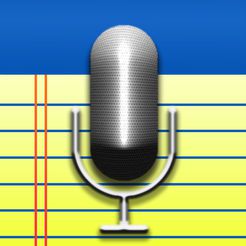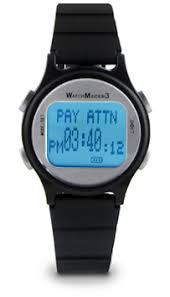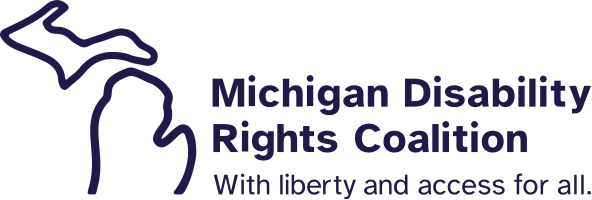Back to School Assistive Technology
Tuesday, September 4, 2018

by Laura Hall, MATP staff
This morning, I awoke to the sound of the school bus in my neighborhood. I knew my commute to work would begin to take longer as students now inhabit the city within the city that is Michigan State University. It’s back to school time, and we wanted to start the year off right with some examples of assistive technology that can support a successful student.
Thinking back to my own education, I could have used assistive technology that may not have been available at the time were in the areas of note-taking, organization, and time management. I know I’m dating myself, but back before laptops, iPads, and iPhones were allowed in the classroom, I used to have to ask for accommodations to get the teacher’s lecture notes or PowerPoints ahead of time, request a scribe, or borrow notes from a classmate. Today, technology is available to help with notetaking that doesn’t rely on support from another person. For example, with the Livescribe pen, you’re able to record audio while you take notes. Using Livescribe’s special paper, you can then review the audio in sync with your notes merely by tapping the pen to the page.  If drawing pictures or writing down key concepts is a better way for you to learn, you still have the audio that corresponds with what you put down on paper. Your notes can also be downloaded and saved along with the synched audio to share at a later time. Similarly, AudioNote, an app for Apple and Android, allows you to type notes on a screen and record audio that is time stamped with the notes.
If drawing pictures or writing down key concepts is a better way for you to learn, you still have the audio that corresponds with what you put down on paper. Your notes can also be downloaded and saved along with the synched audio to share at a later time. Similarly, AudioNote, an app for Apple and Android, allows you to type notes on a screen and record audio that is time stamped with the notes.
Organization can take many forms, including calendars, to do lists, reminders, and more. Many people are now using the calendars built into their phones or email program, such as iCal or Google Calendar. There are other apps, some that are aimed at students, like iStudiez Lite (Free) and Pro  ($2.99) manages your class schedule, teacher contacts, and upcoming assignments/tests. It’s a school-specific calendar app and to-do list rolled into one. Sometimes, shared to-do lists, like Wunderlist or ToDoist are helpful when working in a group or just to have another person help keep you on track. Built into many of these apps are notifications that can alert you to an upcoming event or task on your phone or desktop as well. The Amazon Echo and Alexa devices can also verbalize your tasks for the day either by asking her to create a to-do list or linking your iCal or Google Calendar. However, some people might need more than a simple alert. On the lower-tech end, the Watchminder can vibrate on the wrist with a message on the screen that is pre-programmed such as “Pay Attention” or customized to your need. Higher tech wearables, like the Apple Watch can alert to reminders, emails, texts, and so much more.
($2.99) manages your class schedule, teacher contacts, and upcoming assignments/tests. It’s a school-specific calendar app and to-do list rolled into one. Sometimes, shared to-do lists, like Wunderlist or ToDoist are helpful when working in a group or just to have another person help keep you on track. Built into many of these apps are notifications that can alert you to an upcoming event or task on your phone or desktop as well. The Amazon Echo and Alexa devices can also verbalize your tasks for the day either by asking her to create a to-do list or linking your iCal or Google Calendar. However, some people might need more than a simple alert. On the lower-tech end, the Watchminder can vibrate on the wrist with a message on the screen that is pre-programmed such as “Pay Attention” or customized to your need. Higher tech wearables, like the Apple Watch can alert to reminders, emails, texts, and so much more.
 Even after being out of school for many years, I still need support for time management. I tend to get overwhelmed by all I need to do, or distracted by the email coming in every 5 minutes, leaving me stuck. Forest is an app Chrome extension I use to, help me stay focused by breaking up tasks in 25 intervals, with 5-minute breaks, minute break after four 25-minute intervals (similar to a Pomodoro or tomato timer). However, Forest also allows you to grow virtual trees by completing each cycle, effectively growing a forest. However, the best part is that the “points” you build up can actually be donated to an organization that plants actual trees around the world.
Even after being out of school for many years, I still need support for time management. I tend to get overwhelmed by all I need to do, or distracted by the email coming in every 5 minutes, leaving me stuck. Forest is an app Chrome extension I use to, help me stay focused by breaking up tasks in 25 intervals, with 5-minute breaks, minute break after four 25-minute intervals (similar to a Pomodoro or tomato timer). However, Forest also allows you to grow virtual trees by completing each cycle, effectively growing a forest. However, the best part is that the “points” you build up can actually be donated to an organization that plants actual trees around the world.
While I struggle to stay focused on a task, others struggle to break their focus to move on to the next task. If transitioning between tasks is difficult, the Learning Resources Time tracker provides a very visual concrete cue as it transitions from green to yellow to red. With the CanPlan app, any activity can be broken into a sequence of easy-to-follow steps, illustrated by photos and reinforced with optional text and audio. Scheduling and reminder features ensure each task gets done on time.
If you’re looking for support in finding and using assistive technology in higher education, contact the campus’ Disability Services Office. Additionally, the Alt+Shift Lending Library contains assistive technology equipment and software that is available to Michigan’s PK-12 public schools and affords districts the opportunity to try assistive technology with a student who has an Individualized Education Program (IEP) to assess effectiveness at meeting their needs prior to purchase. The length of loans varies depending on individual and consideration of assistive technology needs.
What assistive technology makes you a successful student or employee?

